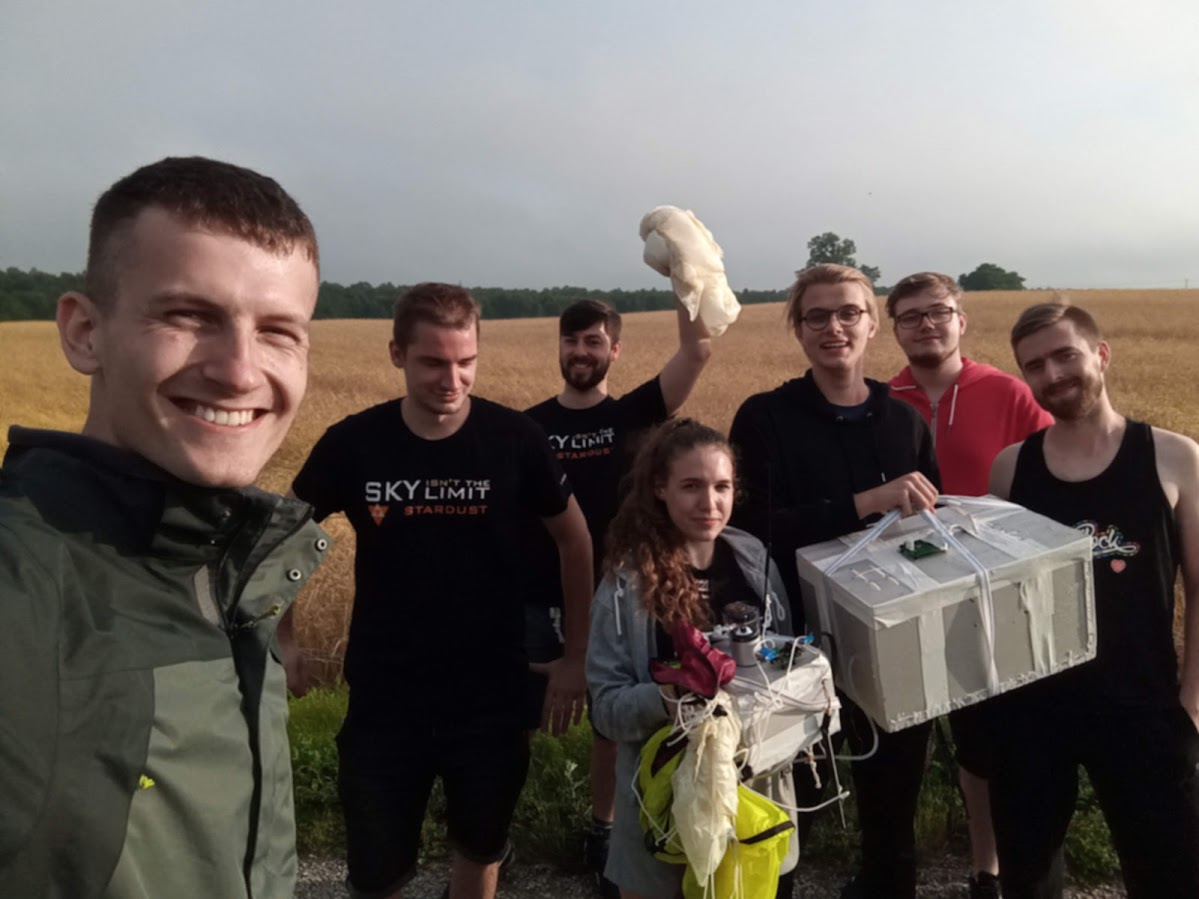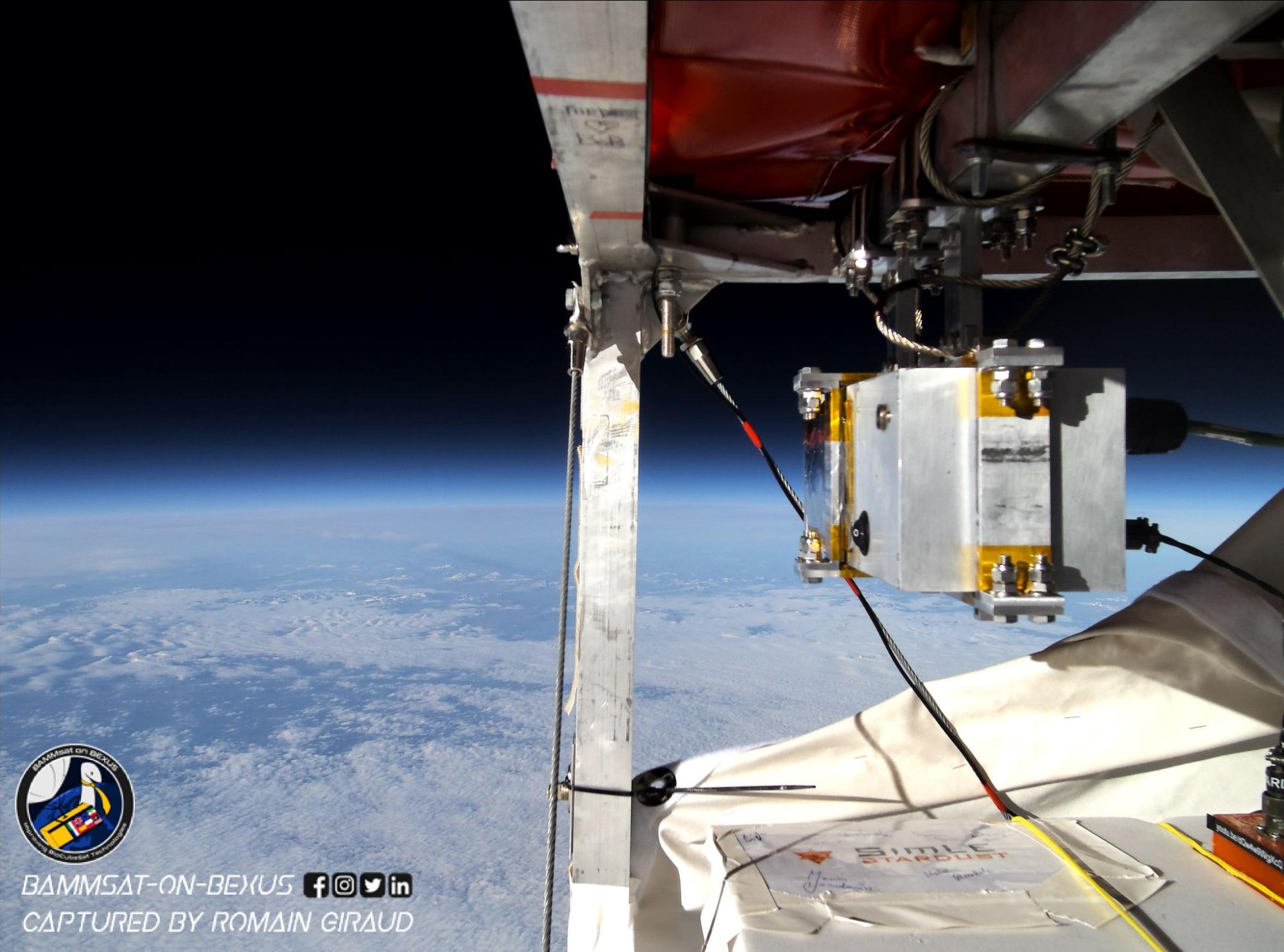Stardust is an interdisciplinary project of students of the Gdańsk University of Technology, whose goal is to send experiments in stratospheric balloons as part of the REXUS / BEXUS and Global Space Balloon Challenge competitions.
The idea for the implementation of the mission of stratospheric balloons was born in our heads in 2015. After the first successful missions aimed at reaching the stratosphere and checking the possibilities of the solutions being created, we were ready to carry out more complicated experiments. We invited young scientists from the Biotechnology Students’ Organization, also operating at the Gdańsk University of Technology, to cooperate in order to carry out a microbiological mission together.

Samples that we took during the biological mission were tested and classified, it turned out that 26% of the genetic material we collected were still undescribed bacteria! Based on the research carried out, a scientific publication is created.
The experiments will be continued in the laboratory of the Department of Molecular Biotechnology and Microbiology at the Faculty of Chemistry of GUoT, because their further stages require strict working conditions. The purpose of the experiments is to study the diversity and properties of the bacterial stratosphere microflora. Scientific literature suggests the possibility of occurrence in the stratosphere of bacteria with high resistance to high doses of UV radiation and ionizing. We do not exclude the possibility of having previously unknown DNA repair mechanisms that could be an inspiration for future scientists to use them in practice.
Preliminary studies conducted by SimLE and the Biotechnology Student Organization show that a large number of bacterial species are present in the stratosphere that have not yet been described. They also suggest a numerical superiority of Enterococci over other bacteria in the stratosphere, which was not confirmed by previous literature reports. We believe that this requires deeper verification by performing well-planned experiments. We are counting on success in the form of both taking good places in competitions and groundbreaking research results in the chosen field; both from the technical and research point of view.

In connection with the development of the microbiological project implemented under Stardust, we have applied to the REXUS / BEXUS program organized by the Swedish National Space Council (SNSB) and the German Space Agency (DLR) in cooperation with the European Space Agency (ESA). We successfully passed the first stage of sending simplified project documentation, so in November 2019 we were invited to the European Center for Space Research and Technology in Noordwijk in the Netherlands to present the project to an expert panel. We were the only representative of our country during this event. To our delight, we have also passed this stage successfully and as one of six European teams we will take part in the stratospheric mission that will take place in October 2020 in Swedish Kiruna. Thanks to this mission, our microbiological experiment will be able to take almost 5-hour flight in the stratosphere, and we will be able to re-test on a larger sample of material.
As part of the Stardust project in cooperation with the Space Medicine Science Club from Zielona Góra, we have created the ANTARES mission. In the spring of 2018, we sent human cells to the stratosphere with the first mission in order to perform subsequent studies that are to prove a correlation between the adopted dose of radiation and an increased risk of developing cancer. The research aims to check whether people who are frequently in conditions of increased cosmic radiation, e.g. pilots of passenger planes or astronauts are more exposed to cancer.
The Gdańsk Academy of Fine Arts also participated in the mission. As part of joint actions, a stingray sculpture was sent to the stratosphere.
As part of Stardust, we have also implemented a vacuum chamber project. In the 2016/2017 academic year, we managed to undergo the process from design to construction of a vacuum chamber prototype. Work on the chamber has come to an end, the chamber has been tested and found to be fully functional. In the 2018/2019 academic year, along with the use of the chamber, we imitated the conditions of the stratosphere and studied electronics before starting the next missions of the ANTARES project.
Another undertaking, already implemented, as part of the Stardust program was the construction of a pneumatic stabilization system for altitude rocket. The project was created in cooperation with company SpaceForest. The goal was to design and build a stabilizer system demonstrator that could be used to stabilize rockets launching from the 25 km stratospheric platform.
The work of students took third place in the competition for the best group project of the Faculty of Electronics, Telecommunications and Informatics of the Gdańsk University of Technology.
In addition, as part of the Stardust project, several SimLE members support the activities of talented high school students from IIILO in Gdynia as part of their 3-SAT project, which aims to conduct an experiment in the form of a stratospheric mission along with conducting astrobiological research there. Members of the Stardust project, due to their experience in implementing stratospheric missions, helped high school students to complete their start in October 2018.
We also invite you to the Antares project and the microbiological project fan pages on Facebook, where we add current information, as well as to the website describing our activities in the REXUS / BEXUS program: Microbiological project Stardust Bexus Antares project
